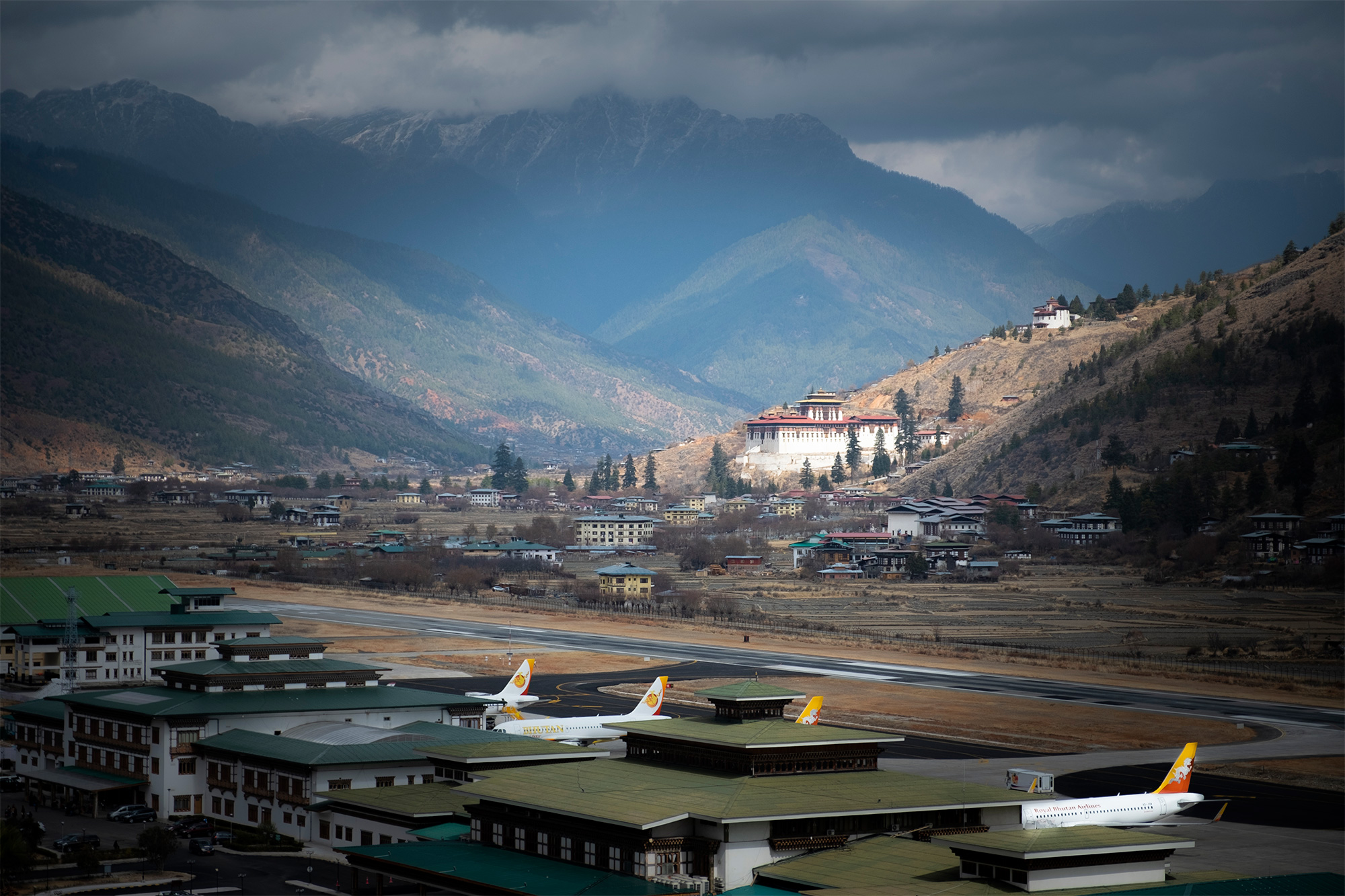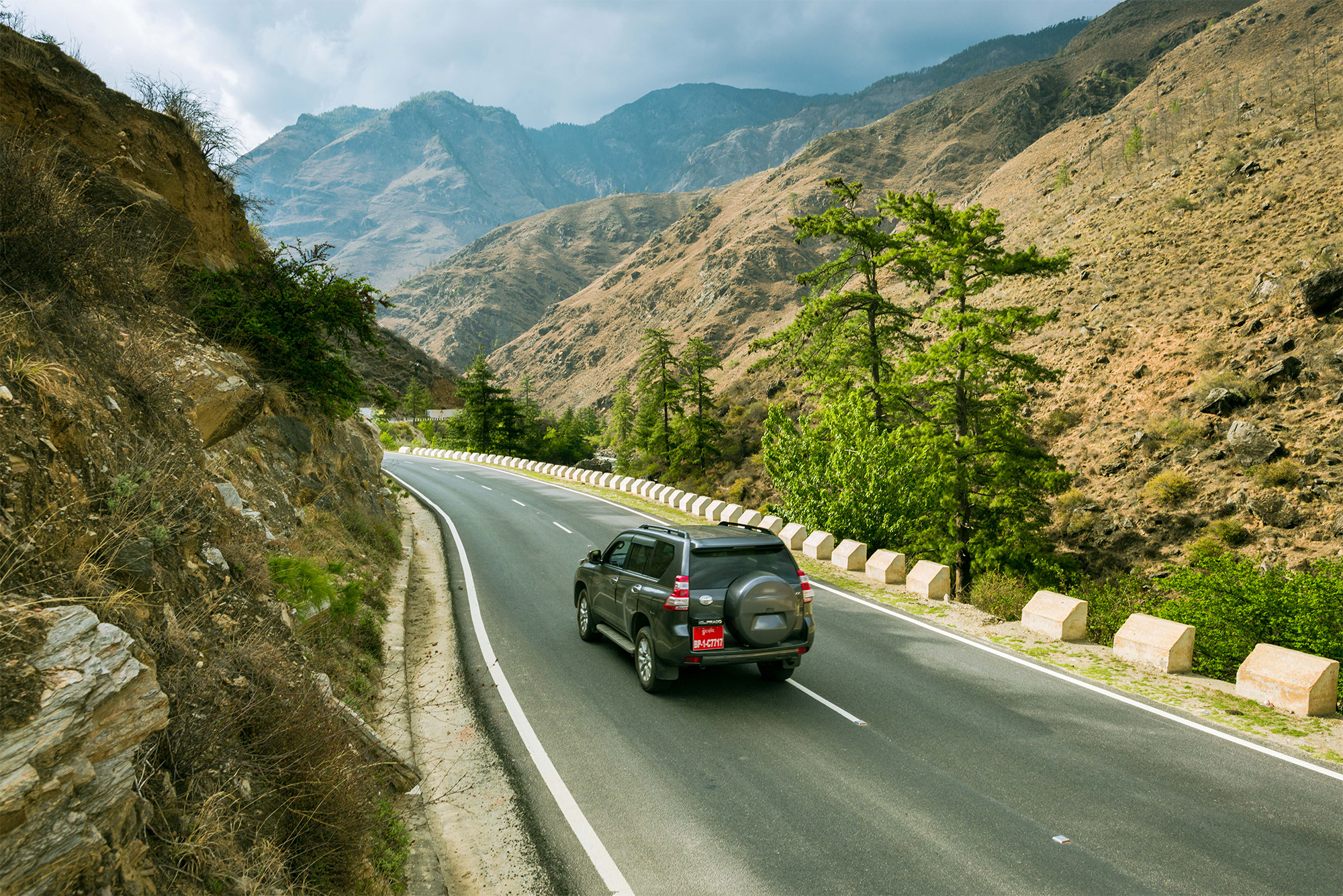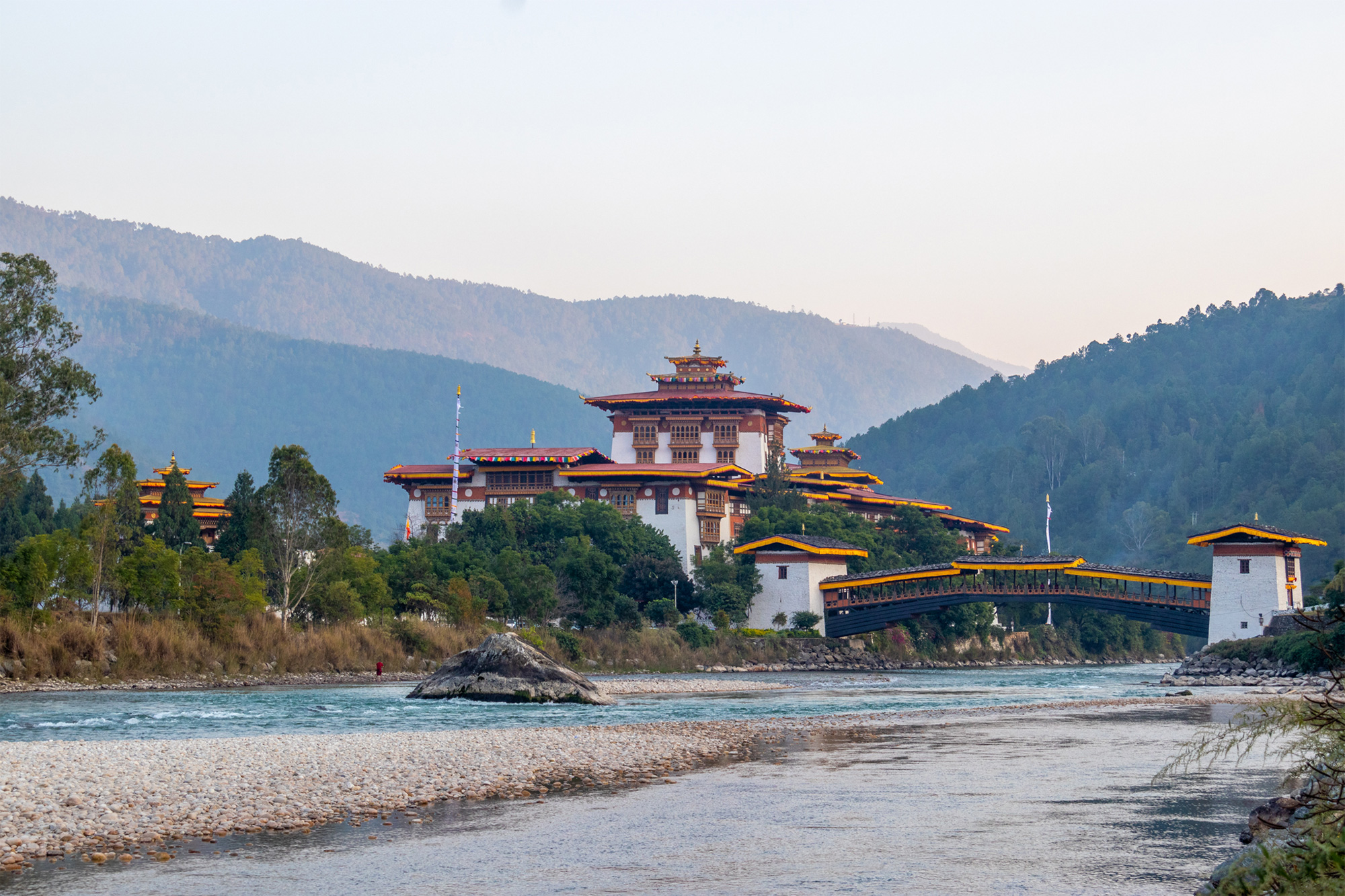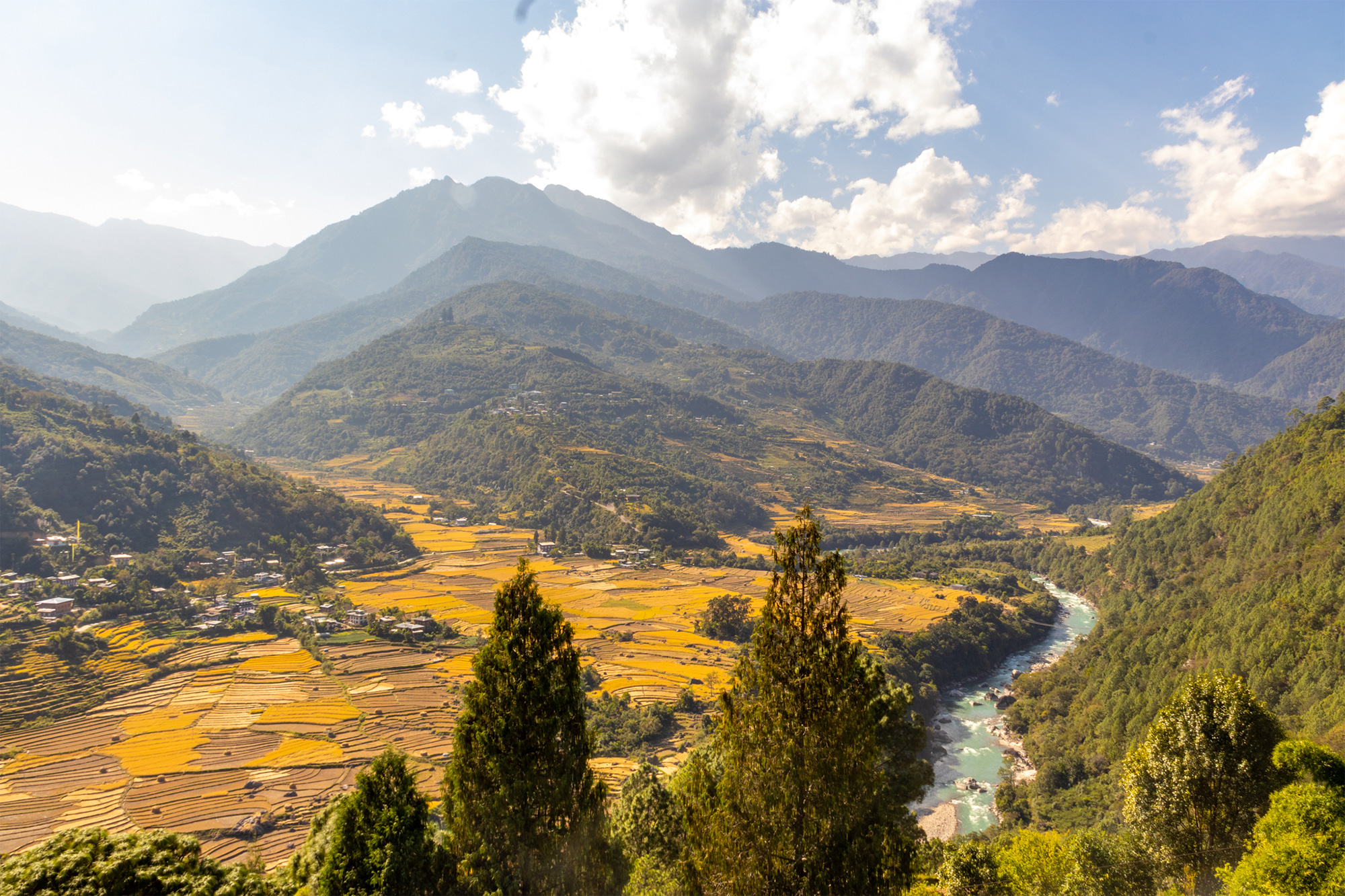So, you’ve decided to visit Bhutan—an incredible choice! Bhutan is a land of stunning landscapes, rich culture, and warm hospitality. But before you start daydreaming about the breathtaking Himalayan views, let’s talk about how to actually get there.
Unlike many other travel destinations, Bhutan has a unique travel system in place, which might seem a bit tricky at first. But don’t worry—we’ve got you covered with this simple, step-by-step guide to getting to Bhutan hassle-free!
1. Can You Travel to Bhutan on Your Own?
Let’s clear this up right away—if you’re travelling from most countries, you’ll need to book your trip through a licensed Bhutanese tour operator. Bhutan follows a regulated ‘High Value, Low Volume’ tourism policy to preserve its culture and environment, which means independent travel is limited.
That said, as of recent regulations, visitors can travel to Thimphu and Paro without a tour guide but will need one if they venture beyond these areas. So, if you’re planning to explore places like Punakha, Bumthang, or the scenic Haa Valley, you’ll need to book a tour.
2. Flying to Bhutan: Your Main Entry Point

The fastest and easiest way to get to Bhutan is by air. Paro International Airport (PBH) is the only international airport in Bhutan, and it’s served by just two airlines:
- Drukair (Royal Bhutan Airlines)
- Bhutan Airlines
Drukair Destinations:
India: Delhi, Kolkata, Bagdogra, Guwahati
Nepal: Kathmandu (Find out more: Travelling to Bhutan from Kathmandu)
Thailand: Bangkok (Find out more: Travelling to Bhutan from Bangkok)
Singapore (Find out more: Travelling to Bhutan from Singapore)
Bangladesh: Dhaka
UAE: Dubai
Bhutan Airlines Destinations:
India: Delhi, Kolkata, Bagdogra, Guwahati
Nepal: Kathmandu
Thailand: Bangkok
Vietnam: Hanoi
Hong Kong
Malaysia: Kuala Lumpur
Flights to Bhutan are an experience in themselves, offering breathtaking views of Mount Everest, Kanchenjunga, and other Himalayan peaks. But be prepared—landing in Paro is considered one of the world’s most thrilling airport landings due to its mountainous surroundings!
3. Travelling to Bhutan by Land

If you’re already in India, you can enter Bhutan by road. There are three official land border crossings:
- Phuentsholing – The most popular and convenient entry point, located in West Bhutan, near the Indian city of Jaigaon (West Bengal).
- Gelephu – Located in South-Central Bhutan, this border is useful if you’re coming from Assam.
- Samdrup Jongkhar – This entry point in East Bhutan is ideal for those travelling from Guwahati, Assam.
From these border towns, you can travel to major Bhutanese cities like Thimphu and Paro by road. If you enter via Phuentsholing, expect a scenic 5-hour drive to Thimphu.
4. Do You Need a Visa to Enter Bhutan?
Yes, unless you’re from India, Bangladesh, or the Maldives. Here’s what you need to know:
- Tourists (except Indian, Bangladeshi, and Maldivian citizens) must obtain a visa prior to arrival in Bhutan.
- You can either apply for the visa online through the Department of Tourism portal or through your tour operator.
- The Bhutan visa fee is USD 40.
- You’ll also need to pay the Sustainable Development Fee (SDF), which is USD 100 per day per adult (discounts may apply for children and longer stays).
- If you decide to book a Bhutan tour through a tour operator, your tour operator will arrange your visa for you, so you won’t need to worry about the paperwork!
Indian travellers don’t need a visa but must apply for an Entry Permit upon arrival. Bangladeshi, and Maldivian citizens can get a visa on arrival.
5. Understanding the Sustainable Development Fee (SDF)

One of the most important things to know when planning a trip to Bhutan is the Sustainable Development Fee (SDF). This is a mandatory fee charged to international visitors to support Bhutan’s conservation efforts, sustainable tourism, and development projects.
- For most international tourists above 12 years old: The SDF is USD 100 per person, per night.
- For Indian tourists: The SDF is INR 1,200 per person, per night.
- Children between 6-11 years old: Pay 50% of the SDF.
- Children below 6 years: Are exempt from the SDF.
This fee is used to maintain Bhutan’s pristine environment, protect its cultural heritage, and ensure high-value, low-impact tourism.
6. Best Time to Travel to Bhutan

Bhutan is a year-round destination, but the best time to visit Bhutan depends on what you’re looking for:
- Spring (March-May): Ideal for festivals and rhododendron blooms.
- Autumn (September-November): The best season for clear skies and trekking.
- Winter (December-February): Perfect for fewer crowds and snow-capped landscapes.
- Summer (June-August): Green landscapes but expect occasional monsoon rains.
If you want to experience Bhutan’s famous festivals, consider visiting during Paro Tshechu (March/April) or Thimphu Tshechu (September/October).
7. Booking Your Bhutan Trip
Since Bhutan’s tourism is regulated, booking through a licensed Bhutanese tour operator is the best way to go. Here’s what you should look for:
- Customisable itineraries – Choose a package that fits your interests (culture, trekking, photography, wellness, etc.).
- Experienced guides – A good guide makes all the difference in understanding Bhutan’s unique traditions.
- Comfortable accommodations – Bhutan offers a range of hotels from cosy traditional lodges to luxury resorts.
Most tour operators will handle everything, including visas, flights, and accommodation, so you can relax and enjoy your adventure!
8. What to Pack for Bhutan
Packing for Bhutan depends on the season, but here are some essentials:
- Layers of clothing – Bhutan’s weather can be unpredictable, so bring warm layers.
- Comfortable walking shoes – You’ll be exploring monasteries, trekking, and walking a lot.
- Power adapter – Bhutan uses Type D, F, and G plugs, so bring an adapter if needed.
- Cash (in USD or INR) – Credit cards aren’t widely accepted outside major hotels and shops.
Check out the full packing list for Bhutan and other useful Bhutan travel tips.
9. Arrival in Bhutan
Once you’ve arrived in Bhutan, get ready to experience the warmth and hospitality of the Land of the Thunder Dragon. If you’ve pre-booked your vehicle via www.avis.bt, your driver and vehicle will be waiting to receive you at the airport, making your arrival smooth and hassle-free. The moment you step out of Paro International Airport, you’ll be greeted by crisp mountain air, stunning landscapes, and the peaceful atmosphere that Bhutan is known for.
Now that you know how to get to Bhutan, all that’s left to do is book your trip and start counting down the days!

